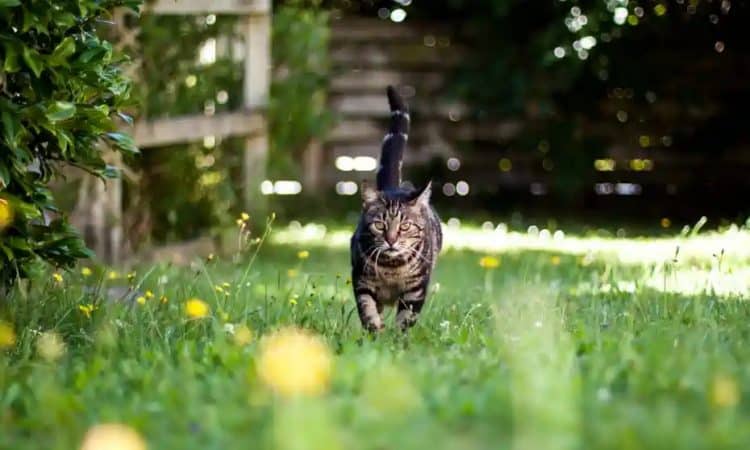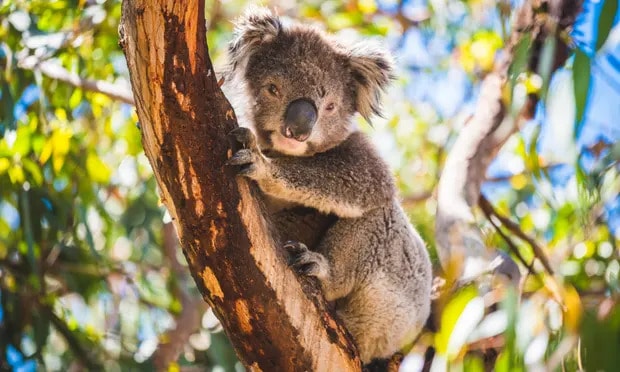Australia needs to consider allowing healthy koalas to be euthanised in order to control numbers in overpopulated areas, where the animals risk dying painfully from starvation, a koala expert says.
Although not endangered in any state, koalas are listed as vulnerable in the eastern states of Queensland and New South Wales, where their habitat is dwindling.
But in parts of Victoria and South Australia, overpopulation of koalas has left them competing for food.
On Wednesday, the Victorian government confirmed almost 700 sick and starving koalas were euthanised at Cape Otway, in the state’s south-west, in 2013 and 2014.
A sustainable koala density in Victoria was considered to be less than one koala per hectare, but densities at Cape Otway had peaked at 20 per hectare, the state’s environment minister, Lisa Neville, said.
“This is a challenging and complex issue that we need to address humanely and effectively,” she said.
“We will be guided by the advice of experts in the field to assess the best options to prevent suffering and we will be open and transparent with the community whilst doing so.”
The koalas were captured, sedated and had their health assessed by veterinarians. If found to be critically ill, they were euthanised humanely by lethal injection.
Healthy females were treated with fertility control hormone implants before being released.
Under the National Koala Conservation and Management Strategy, euthanising koalas is only legal when the animals are severely unwell.Advertisement
But Desley Whisson, a Deakin University koala and overabundance ecologist who assisted in the euthanising at Cape Otway, said overpopulation would be an ongoing problem unless that policy was reviewed.
“Until there is a change in thinking that allows for a very controlled euthanasia program, we will continue to have these issues,” Whisson said.
“I’m not talking about letting any landholder shoot koalas, I’m talking about government bodies, with scientific input, removing them and euthanising them.
“I’m not sure any politician would like to take this on though, because as soon as you say we will permit euthanising of koalas, there is concern about an international outcry. People don’t want to accept an animal can exist in low numbers in one area and high numbers in another.”
Environment groups have called for koalas in overpopulated areas to be translocated to new regions, where habitat was more abundant, and for existing habitat to be protected.
But Whisson said translocation was extremely difficult, with suitable areas difficult to find. There were currently about 8,000 koalas at Cape Otway, or about 11 per hectare.
“You must move them to a habitat similar to where they’ve been taken from, with the same species of trees for them to feed on, or they just won’t adapt,” she said.
“Overpopulation is not just a matter of there not being enough habitat, it’s more about interference with the environment. We’ve removed a lot of fire out from these systems, which would have kept numbers a lot lower.”
Chlamydia appeared in lower rates in the Cape Otway koala population, she said, and did not seem to be making them as sick or killing them as it did in other populations under more stress.
Sterilising koalas, either through surgery or hormonal implants, was an option. But it would take many years for it to lead to any significant decline in population numbers, Whisson said.
South Australia was currently using surgical sterilisation to tackle overpopulation there, she said.
“I wish there was an easy answer, but there is no easy solution to this,” Whisson said.
The Australian Koala Foundation estimates there are fewer than 80,000 koalas left in the wild.
Anthony Amis, a land use researcher from environmental group Friends of the Earth, said logging of blue gum plantations in Victoria and South Australia would reduce koala numbers while exacerbating overpopulation problems.
Koalas had made plantations their home, but logging left many of them severely injured, while survivors were left competing for what habitat remained, Amis said.
He believes areas of plantations where high densities of koalas were recorded should not be logged at all.
“Once plantations are logged, koalas that survive the clearfelling then become refugees honing in on whatever suitable vegetation is remaining,” he said.
“At several locations we are already hearing of up to a dozen koalas remaining in a couple of trees. Unless the koalas move on, that vegetation will probably be overbrowsed with the animals eventually starving to death.”
We invite you to share your opinion whether koalas should be culled in overpopulated areas to prevent starvation. Please vote and leave your comments at the bottom of this page.
This article was first published by The Guardian on 04 Mar 2015. Lead Image: There are estimated to be fewer than 80,000 koalas left in the wild. Photograph: Steve Bloom Images /Alamy.







Leave a Reply